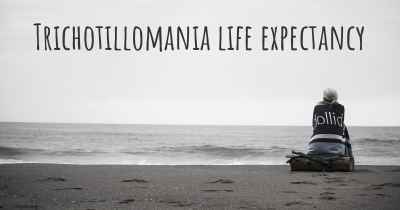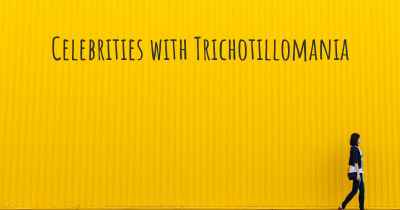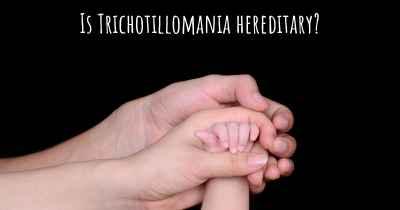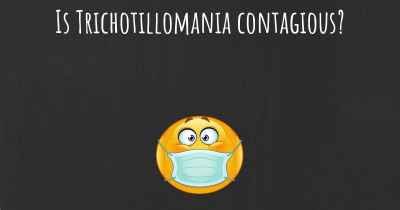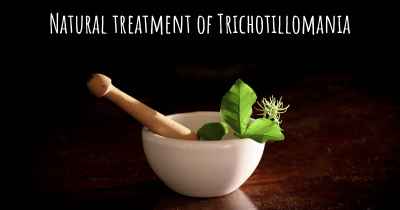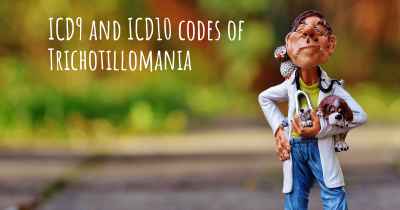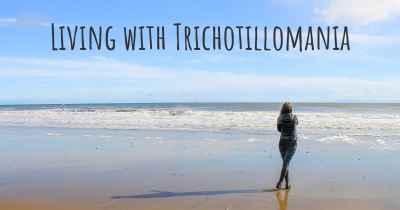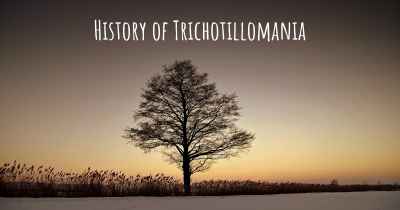Trichotillomania diet. Is there a diet which improves the quality of life of people with Trichotillomania?
Are you aware of a diet that can improve the quality of life of people with Trichotillomania? Is there a diet that is suggested to avoid when having Trichotillomania? See if there is a diet that can improve the quality of life of people with Trichotillomania, recommended and to avoid food when having Trichotillomania
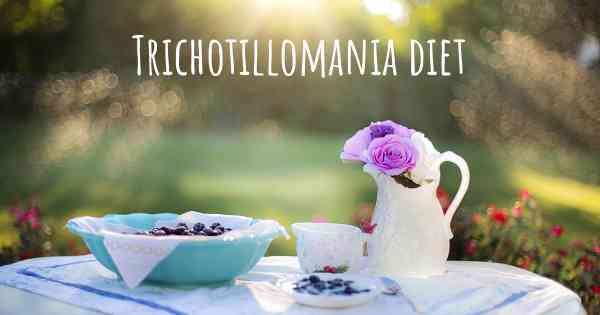
Trichotillomania Diet: Improving Quality of Life
Trichotillomania is a disorder characterized by the irresistible urge to pull out one's hair, resulting in noticeable hair loss. While there is no specific diet that can cure or directly treat trichotillomania, adopting a healthy and balanced diet can contribute to improving the overall quality of life for individuals with this condition.
The Role of Nutrition
Proper nutrition plays a vital role in maintaining overall well-being, including mental health. While it may not directly address the underlying causes of trichotillomania, a healthy diet can help manage stress levels, improve mood, and promote overall physical health.
Key Nutrients for Mental Health
Several nutrients have been linked to mental health and may indirectly benefit individuals with trichotillomania:
- Omega-3 Fatty Acids: Found in fatty fish, flaxseeds, and walnuts, omega-3 fatty acids have been associated with improved mood and reduced symptoms of depression and anxiety.
- B Vitamins: B vitamins, particularly B6, B9 (folate), and B12, are essential for brain health and the production of neurotransmitters. Good sources include leafy greens, legumes, eggs, and fortified cereals.
- Magnesium: Magnesium is involved in over 300 biochemical reactions in the body, including those related to mood regulation. Foods rich in magnesium include dark chocolate, nuts, seeds, and leafy greens.
- Vitamin D: Low levels of vitamin D have been associated with depression and other mental health disorders. Natural sources of vitamin D include sunlight, fatty fish, and fortified dairy products.
Stress Management
Stress is often a trigger for trichotillomania episodes. While diet alone cannot eliminate stress, certain foods and lifestyle choices can help manage stress levels:
- Complex Carbohydrates: Foods like whole grains, legumes, and vegetables can help stabilize blood sugar levels and promote a steady release of serotonin, a neurotransmitter that contributes to feelings of well-being.
- Protein: Including adequate protein in your diet can help regulate blood sugar levels and prevent energy crashes, which can contribute to increased stress levels.
- Hydration: Dehydration can exacerbate stress and anxiety. Ensure you drink enough water throughout the day to stay properly hydrated.
- Limit Stimulants: Caffeine and alcohol can increase anxiety and stress levels. Reducing or avoiding these substances may help manage trichotillomania symptoms.
Seeking Professional Help
While adopting a healthy diet and lifestyle can be beneficial, it is important to remember that trichotillomania is a complex disorder that often requires professional intervention. If you or someone you know is struggling with trichotillomania, it is essential to seek help from a qualified healthcare professional or therapist who specializes in treating this condition.
Note: The information provided here is for informational purposes only and should not replace professional medical advice. Always consult with a healthcare professional before making any significant changes to your diet or treatment plan.
Posted May 21, 2017 by Ksantamariar 600
Posted Aug 10, 2017 by Katlyn 1400
Posted Aug 10, 2017 by Lucyeleanor2601 2620
Posted Aug 10, 2017 by Kathryn 450
Posted Aug 10, 2017 by Shirley 2150
Posted Aug 10, 2017 by Ellen 2161
Posted Aug 11, 2017 by Sari 2050
Posted Aug 11, 2017 by Theresa 970
Posted Aug 12, 2017 by Catswithtatts 1650
Posted Sep 10, 2017 by Cynthia 1502
Posted Oct 19, 2017 by Felicia@Face2FaceSpa 2000
Posted Oct 20, 2017 by bennersk 2190
Approach Considerations
After a diagnosis of trichotillomania is confirmed through a workup, the following actions are indicated:
Determine whether symptoms represent a short-term childhood habit rather than true trichotillomania
Determine whether the symptoms indicate a more serious psychological problem through consultation and collaboration with a psychiatrist, developmental-behavioral pediatrician, or licensed clinical psychologist; consultation is recommended and may be required for choosing various treatment options [27]
Recognize that children with presenting symptoms of trichobezoars may require further evaluation via ultrasonography, magnetic resonance imaging (MRI), or computed tomography (CT)
Currently available evidence suggests that the first line of treatment for trichotillomania is behavioral treatment and intervention, with a focus on affective regulation. [28] No medication has been approved for the treatment of trichotillomania. Drug therapy has largely been disappointing, though some studies have yielded encouraging results. [29, 30, 31]
A psychiatrist should be consulted when a serious psychiatric disorder is suspected. Consultations with other specialists (eg, a psychologist or a developmental-behavioral pediatrics specialist) should be obtained as indicated. A surgeon may be consulted if removal of trichobezoars in the stomach and intestines is under consideration.
Behavioral Interventions
In current practice, behavioral treatment seems to be the most powerful treatment, even for patients older than age 16 years. [32] Effective behavioral strategies in the treatment of trichotillomania in children include the following:
Habit reversal - This is a set of procedures taught to a child that includes the following components: increasing awareness of the habit; teaching a competing response to practice when the child feels the urge to engage in the habit, in situations where the habit historically occurs or for 1 minute after the occurrence of the habit; practicing stress and anxiety reduction procedures on a daily basis; and support and encouragement from parents [33]
Self-monitoring - This involves systematically observing and discriminating when the behavior occurs, recording the responses, and evaluating one’s own behavior
Competing reaction training - This is a component of habit reversal that is occasionally used alone; a child is taught a socially appropriate alternative behavior or response and encouraged to practice it on a daily basis when they feel the urge to engage in the habit, in situations where the habit historically occurs or for 1 minute after the occurrence of the habit
Relaxation training - This involves helping children identify their own bodily sensations associated with tension and then employ procedures designed to induce relaxation; typically, it is individualized and may include such procedures as deep-breathing strategies and systematic muscle tensing and relaxation
Psychotherapy - This process involves direct communication (mainly talking) between a therapist and a child and makes use of various techniques to help solve behavioral and other psychological problems; one of its most popular forms is cognitive-behavioral therapy (CBT)
Hypnosis - This is a process of controlling physiologic responses by focusing attention on specific mental images for therapeutic purposes, typically to gain more control over behavior, emotions, or physical well-being; in a hypnotized state, the subject is more open than usual to suggestions (provided by the hypnotist) for subsequent changes in behavior
Elimination of a comorbid behavior - When 2 seemingly different behaviors occur together (eg, trichotillomania and thumb sucking), a treatment to reduce or change one of them may also reduce or change the other
In a broad sense, the commonsense approach to stopping the bad habit that makes use of parental involvement is a primitive form of behavioral therapy. It is worth trying first. To achieve the level of parental involvement necessary to aid in treatment, the physician should ensure that parents fully understand the entire nature of the alopecia. Some parents who have not witnessed episodes of hair pulling by their child refuse to believe that the condition is self-inflicted. [34]
In infant patients, provision of loving care with enough maternal skin contact, in conjunction with available transitional objects such as dolls or other toys, would work well. For this purpose, parent-infant psychotherapy in combination with behavioral guidance may be needed. [6]
Parental involvement should include enough support to ensure that their children grow well not only intellectually but also physically and socially. In many cases, patients’ extracurricular activities are almost solely of an intellectual nature (eg, drawing, mathematics, or language lessons) and are not well balanced with social and physical activities.
Shaving or clipping hair close to the scalp may be helpful both for stopping the behavior and for educating the parents regarding the nature of the alopecia. Shaving a circumscribed area weekly (the “hair growth window”) can yield benefits both for diagnosis and for reassurance. It should be kept in mind that the shaved (clipped) hairs are not all in the actively growing anagen stage and that a couple of months may be required before total regrowth is noted.
If these initial approaches do not work, CBT should be instituted. Trichotillomania is a kind of unwanted automated repetition of hair manipulations, and the awareness gained through CBT can help overcome such unwanted automated activity. Dermatologists who treat these patients should, therefore, be familiar with at least a few of the various CBT methods. Therapeutic success may depend on a firm understanding of the illness and on the cooperation of the family. Several courses of CBT may be needed; each course usually lasts 2 months.
In the authors’ experience, patients referred for psychoanalytical treatment often show disappointing results. However, patients whose trichotillomania is largely of the focused type should be referred for psychiatric evaluation because this type shows comorbidity with systemic psychiatric disorders.
Support groups
Support groups would be very helpful. At present, however, setting up and maintaining a support group for patients with trichotillomania is only a remote possibility in most countries because of the general lack of understanding of the disorder and because patients themselves are usually secretive about their behavior. An abundant amount of helpful information and educational tools can be found through the Trichotillomania Learning Center.
Pharmacologic Therapy
Few drug studies on trichotillomania in children and adults exist. The primary agents used are selective serotonin reuptake inhibitors (SSRIs). [35] These agents have demonstrated a degree of effectiveness in some patients with trichotillomania, but a positive treatment response is not consistent. In children, SSRIs (eg, fluoxetine, sertraline, and fluvoxamine) may be more advantageous as a medication choice than tricyclic antidepressants (TCAs) because of their milder adverse effects.
Although at present, no pharmacotherapy for trichotillomania is consistently effective, several studies show promise.
In a double-blind, placebo-controlled trial, Grant et al assessed whether N -acetylcysteine (1200-2400 mg/day) improved trichotillomania in adults with compulsive behavior. [29] Improvement was measured on the Massachusetts General Hospital Hair Pulling Scale (MGH-HPS), the Clinical Global Impression-Improvement (CGI-I) scale, and the Psychiatric Institute Trichotillomania Scale (PITS). After 9 weeks, significantly greater reduction in hair-pulling symptoms on both the MGH-HPS and the PITS was noted in patients taking N -acetylcysteine.
A subsequent study by Bloch et al, however, failed to document a significant improvement with N -acetylcysteine in children with trichotillomania. [36] Their 12-week randomized, double-blinded, placebo-controlled trial was conducted using N -acetylcysteine in children and adolescents aged 8-17 years (N=39) with trichotillomania. The trial did not show a benefit for treatment with N -acetylcysteine when compared with placebo. The authors did note that both groups improved with time, which could be attributed to the patients receiving education and support while being in the study.
Grant et al also assessed the efficacy of the cannabinoid dronabinol for treating trichotillomania in a small open-label treatment study in female subjects, finding that a dosage of 11.6±4.1 mg/day led to a decrease in the mean MGH-HPS from 16.5±4.4 at baseline to 8.7±5.5 at study endpoint. [30] In all, 64.3% of the subjects showed both a decrease in MGH-HPS and a rating of “much or very much” improved on the CGI-I scale, with no adverse effects on cognition.
Van Ameringen et al studied the efficacy of flexible-dose olanzapine for the treatment of trichotillomania in a randomized, double-blind, placebo-controlled trial. [31] A dosage of 10.8±5.7 mg/day showed a significant decrease in the Yale-Brown Obsessive Compulsive Scale for Trichotillomania and the CGI-Severity of Illness scale, with 85% of the subjects who received olanzapine showing improvement on the CGI-I scale. The drug appears to be both safe and effective.
In a study by Golubchik et al, methylphenidate showed limited efficacy in trichotillomania patients with comorbid attention deficit-hyperactivity disorder (ADHD) and a low rate of stressful life events (SLEs). [37]
Case studies suggest that both oxcarbazepine and aripiprazole warrant further study as possible treatments for trichotillomania. [38, 39]
The use of bimatoprost in the treatment of madarosis due to trichotillomania has been described. A 55-year-old woman with trichotillomania was started on bimatoprost 0.03% solution daily. At 2 months, the number and length of eyelashes had doubled compared with the baseline. The medication was stopped at 6 months, and no adverse effects were reported. The patient continued to take amitriptyline to control the urge to pull and fluoxetine for anxiety during the 6 months of treatment. [40]
Whereas drug monotherapy is generally not effective, combination therapy and the addition of other treatment modalities may be helpful.
Antidepressants in pediatric patients
Physicians are advised to be aware of the following information and to use appropriate caution when considering treatment with antidepressants in the pediatric population.
In December 2003, the UK Medicines and Healthcare Products Regulatory Agency (MHRA) issued an advisory stating that most SSRIs are not suitable for use by persons younger than 18 years for treatment of “depressive illness.” After review, this agency decided that the risks SSRIs pose to pediatric patients outweigh the benefits of treatment, except in the case of fluoxetine, which appears to have a positive risk-benefit ratio in the treatment of depressive illness in patients younger than 18 years.
In October 2003, the US Food and Drug Administration (FDA) issued a public health advisory regarding reports of suicidality in pediatric patients treated with antidepressant medications. This advisory reported suicidality (both ideation and attempts) in clinical trials of various antidepressant drugs in pediatric patients. The FDA asked that additional studies be performed, because suicidality occurred in both treated and untreated patients with major depression and thus could not be definitively linked to drug treatment.
However, a subsequent study of more than 65,000 children and adults treated for depression between 1992 and 2002 by the Group Health Cooperative in Seattle found that suicide risk declined, rather than rose, with the use of antidepressants. To date, this is the largest study to address this issue.
Currently, there is insufficient evidence to associate obsessive-compulsive disorder (OCD) and other anxiety disorders treated with SSRIs with an increased risk of suicide.
Diet and Activity
No special diet is required. No activity limitations are suggested. Physical exercise can provide a healthier outlet for stress. In the authors’ experience, many children and adolescents with trichotillomania spend too much time on activities involving little physical exertion (eg, studying at a desk) and not enough on physical activities. If the hair-pulling behavior is associated with a specific activity, however, that activity may require close monitoring. Activities during which patients may engage in hair pulling include the following:
Watching television
Reading
Talking on the phone
Lying in bed
Driving
Writing or doing paperwork
Posted Jan 27, 2018 by Vee 2770
